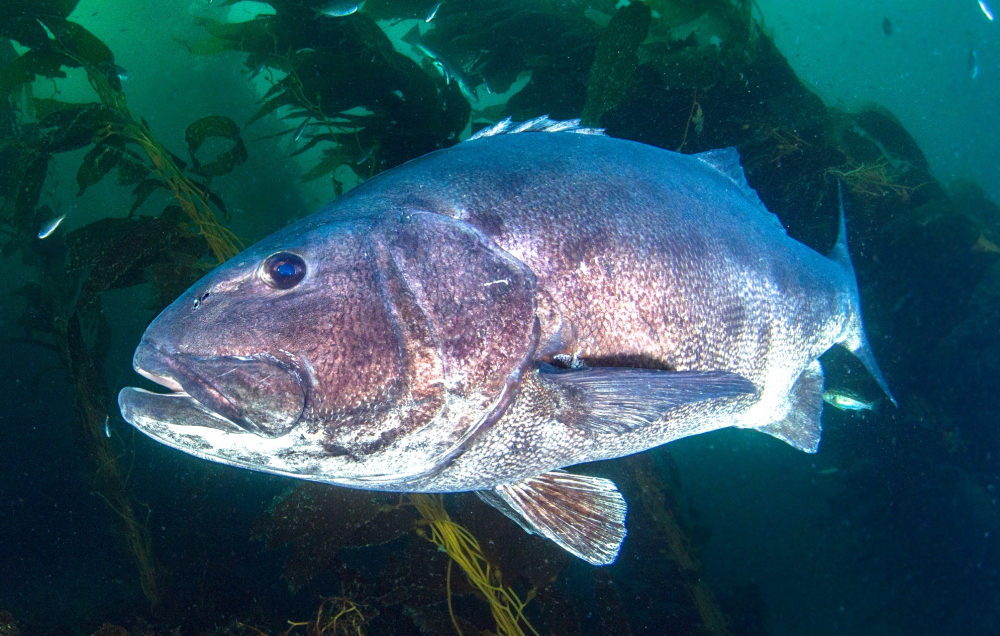Banking on Black Sea Bass
Big Fish Could Boost Underwater Tourism

Though commercial fishing for the species was prohibited in 1981, Stereolepis gigas — more commonly called black sea bass — still appears on menus and in markets as a result of incidental catch during gill-netting of white sea bass and halibut. The small amount made commercially gave UCSB graduate student Ana Sofía Guerra the notion that underwater tourism centered on the fish could be a far more profitable draw.
According to Gary Burke, a fisher out of Santa Barbara for 45 years, the tasty and valuable black sea bass were targeted heavily by spearfishers decades ago, leading to the fish’s near demise. It’s the smaller fish — the 100 pounders that hang out with the commercial fish — that tend to be netted and sold, he said. An inadvertently netted fish brings about $5.50 a pound, said Burke. The total commercial catch annually is about $12,600 on average, Guerra found. Her survey of sport divers, part of a study published in October’s Aquatic Conservation: Marine and Freshwater Ecosystems, stated that their interest in seeing the big, slow-moving fish could be worth an estimated $2.3 million.
These 500-pound giants of the sea, once found in abundance off Santa Barbara’s northern Channel Islands, are “critically endangered,” according to the International Union for Conservation of Nature. That history of teetering on the brink is part of the attraction for sport divers. “I thought they were the ugliest thing ever,” said Tristyn Heldt of Bluewater Dive Travel in Santa Monica, recalling photographs she’d first seen. “But then I finally saw one myself. I get it; they’re massive.”
It was a year of diving the Channel Islands before James Tennant saw one. He manages Sea Landing Dive Center in Santa Barbara and highlighted one of the difficulties in dive tourism: finding the fish. “All the divers want to see a giant sea bass,” Tennant affirmed, and tour operators know where they were yesterday.
Guerra’s paper, which was coauthored by Doug McCauley and Milton Love of UCSB and Daniel Madigan of Harvard University’s Center for the Environment, counted 1.38 million trips made by sport divers, who spent $161 million–$323 million annually. Identifying the areas that contain the giants and those that are plentiful with white sea bass or halibut is “a great jumping-off point,” Guerra said, a place to start thinking “about how to keep these great fisheries going strong, while also trying to minimize catch of endangered species.”



